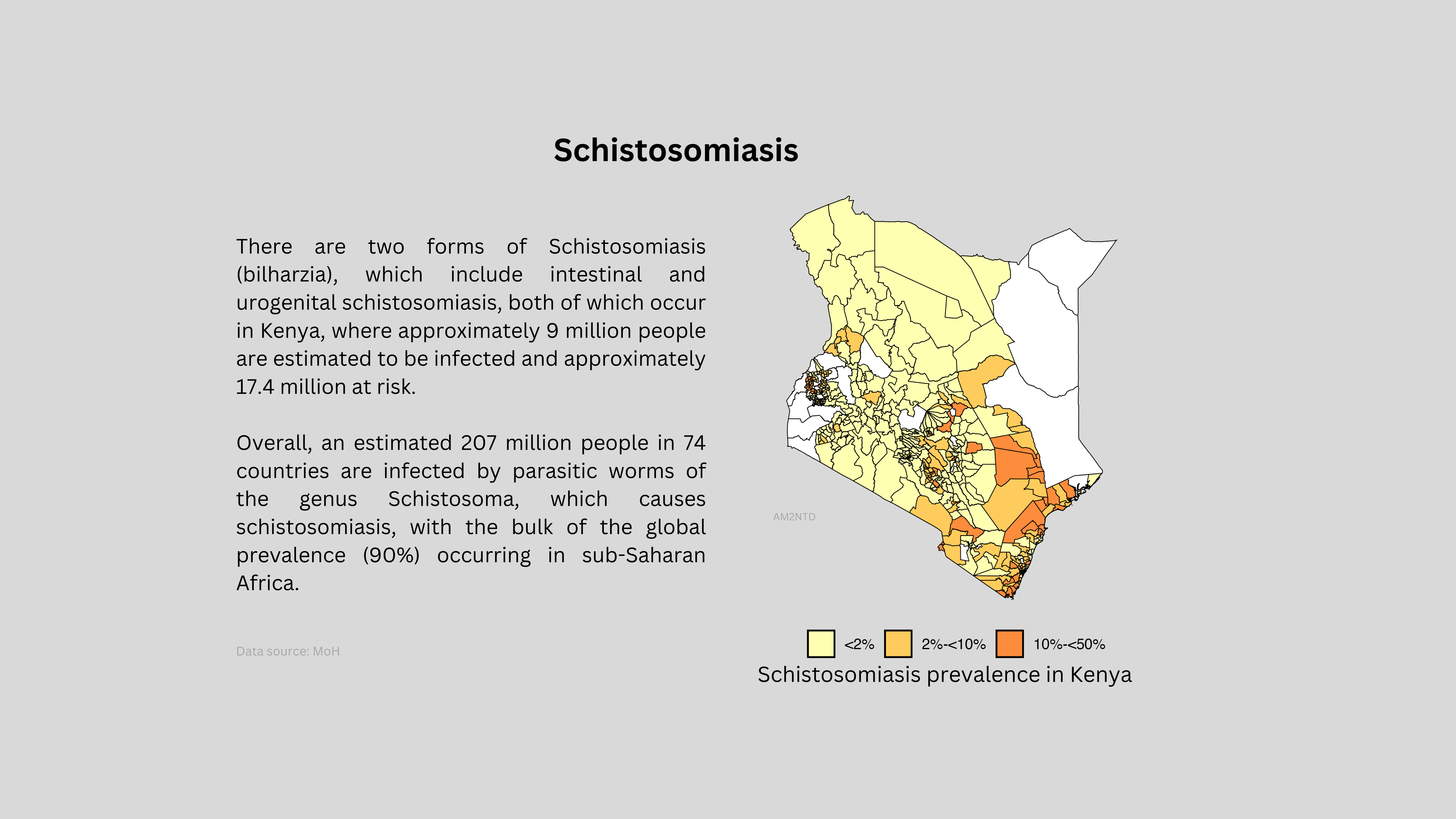Schistosomiasis
Causative Agent: Schistosoma parasites (blood flukes)
Also known as: Bilharzia, Snail Fever

A Water-Borne Parasitic Disease
Schistosomiasis affects almost 240 million people worldwide, with more than 700 million people living in endemic areas
Key Statistics
240M
People affected worldwide
9M
People infected in Kenya
17.4M
People at risk in Kenya
11,792
Global deaths per year
About Schistosomiasis
Schistosomiasis is a parasitic disease caused by blood flukes (trematode worms) of the genus Schistosoma. It affects almost 240 million people worldwide, and more than 700 million people live in endemic areas. The infection is prevalent in tropical and sub-tropical areas, in poor communities without potable water and adequate sanitation.
In Kenya, there are two forms of schistosomiasis: intestinal (caused by S. mansoni) and urogenital (caused by S. haematobium). Approximately 9 million people are estimated to be infected, with about 17.4 million at risk according to WHO data from 2013.
Transmission
People become infected when larval forms of the parasite – released by freshwater snails – penetrate the skin during contact with infested water. Transmission occurs when people suffering from schistosomiasis contaminate freshwater sources with their excreta containing parasite eggs, which hatch in water.
Types and Symptoms
Intestinal Schistosomiasis
Caused by S. mansoni
- Abdominal pain
- Diarrhea
- Blood in stool
- Liver enlargement
- Fibrosis in advanced stages
- Portal hypertension
- Fluid accumulation in the peritoneal cavity
Urogenital Schistosomiasis
Caused by S. haematobium
- Bloody urine
- Bladder fibrosis
- Damage to ureter and kidneys
- Genital lesions
- Pain during urination
- Increased risk of HIV transmission
- Can cause infertility and ectopic pregnancies
Treatment and Control
The WHO strategy for schistosomiasis control focuses on reducing disease through periodic, targeted treatment with praziquantel. This involves regular treatment of all at-risk groups. In Kenya, school-based deworming programs are a key intervention strategy.
Control Strategy Components:
- Preventive chemotherapy with praziquantel
- Access to safe water
- Improved sanitation
- Hygiene education
- Snail control
Impact and Burden
Deaths due to schistosomiasis are currently estimated at 11,792 globally per year. However, these figures are likely underestimated and need to be reassessed. The disease can cause significant morbidity, impacting education, work capacity, and quality of life.
The economic impact is substantial, with studies showing that schistosomiasis can reduce agricultural productivity and educational outcomes in affected areas.
In Kenya
Both intestinal and urogenital forms of schistosomiasis occur in Kenya, with approximately 9 million people infected and about 17.4 million at risk. It is one of the 18 NTDs that are endemic to Kenya.
Schistosomiasis Distribution

AM2NTD's Work
AM2NTD is developing mathematical models to better understand schistosomiasis transmission dynamics and optimize control strategies in Kenya and other endemic African countries.